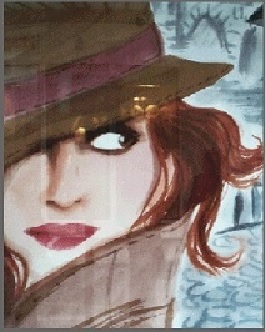
“Portrait d'une Négresse"
Marie-Guihemine Benoist (1768 - 1826). Benoist was a woman of aristocratic lineage who belonged to a small elite circle of professional women painters that included, among others, Anne Vallayer-Coster, Elisabeth Vigée-Lebrun, Marguerite Gérard, Angélique Mongez, and Adélaide Labille-Guiard. As had been the case with most women artists working at the time, Benoist fit the middle and upper class ideal of "womanhood" in her conforming to the social expectations of women to marry, raise children, and forego a career. Although we do not know whether or to what extent Benoist partook in the volatile debates on slavery and gender current during the late eighteenth and early nineteenth centuries in France, her painting may be seen as a voice of protest, however small, in the discourse over human bondage. With the portrait, the artist responded to early nineteenth-century French racialism and the less-than-desirable treatment of women by playing upon the popular analogy of women and slaves. (Thanks to The Art History Archives.)
|
Editor's Page Universal Basic Income and the Threefold Society 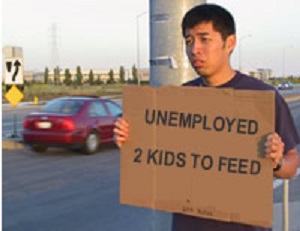
It was back in the late eighties when I worked as an independent Organization Development consultant, and was a member of the International Association for Social Development. The members of IASD meet once a year in different countries. One year the meeting was in Weimar, Germany, where an invited speaker was a Danish women who was a consultant specializing in firing people. She didn't call it that of course, rather some euphemism, but to us she admitted that's what it was. She recommended to companies who had to fire people, and had a conscience, how to do it in the most humane way possible. You shouldn't simply call the employee with a family into the boss's office, give him two month's pay, say goodbye and sorry...
Continue reading HeyZeus - A Second Coming in Brooklyn - A Mystery Play in Seven Scenes by Frank Thomas Smith 
A young man -
Thomas - meets an African-American couple walking on the lake
in Brooklyn's Prospect Park. He suspects that the man - HeyZeus - is
Jesus, but has almost insurmountable difficulty convincing anyone
else - until Alma appears, a young woman who believes him, but may
have another agenda. Thomas first meets unbelief in his friends, his
colleagues, his fiance, a psychiatrist, a bishop and, finally,
himself. Current Events
Human Zoos in the Age of Trump 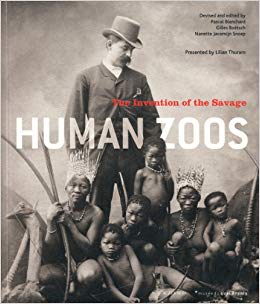
When Donald Trump recently accused “illegal immigrants” of wanting to “pour into and infest our country,” there was an immediate outcry. After all, that verb, infest, had been used by the Nazis as a way of dehumanizing Jews and communists as rats, vermin, or insects that needed to be eradicated. Nobody, however, should have been surprised. The president has a long history of excoriating people of color as animal-like. In 1989, for instance, reacting to the rape of a white woman in New York’s Central Park, he took out full-page ads in four of the city’s major papers (total cost: $85,000) calling for the reinstatement of the death penalty and decrying “roving bands of wild criminals roaming our streets.” He was, of course, referring to the five black and Latino youngsters accused of that crime for which they were convicted -- and, 10 years late, exonerated when a serial rapist and murderer finally confessed... Continue reading Fascism and Social Welfare by Sheri Berman 
An analogy is haunting the United States – the analogy of fascism. It is virtually impossible (outside certain parts of the Right-wing itself) to try to understand the resurgent Right without hearing it described as – or compared with – 20th-century interwar fascism. Like fascism, the resurgent Right is irrational, close-minded, violent and racist. So goes the analogy, and there’s truth to it. But fascism did not become powerful simply by appealing to citizens’ darkest instincts.Fascism also, crucially, spoke to the social and psychological needs of citizens to be protected from the ravages of capitalism at a time when other political actors were offering little help. Continue reading Features Plato and Aristotle - How do they differ by Brian Duignan 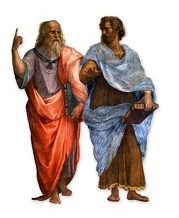
Plato (c. 428–c. 348 BCE) and Aristotle (384–322 BCE) are generally regarded as the two greatest figures of Western philosophy. For some 20 years Aristotle was Plato’s student and colleague at the Academy in Athens, an institution for philosophical, scientific, and mathematical research and teaching founded by Plato in the 380s b.c. Although Aristotle revered his teacher, his philosophy eventually departed from Plato’s in important respects. Aristotle also investigated areas of philosophy and fields of science that Plato did not seriously consider. According to a conventional view, Plato’s philosophy is abstract and utopian, whereas Aristotle’s is empirical, practical, and commonsensical. Such contrasts are famously suggested in the fresco School of Athens (1510–11) by the Italian Renaissance painter Raphael, which depicts Plato and Aristotle together in conversation, surrounded by philosophers, scientists, and artists of earlier and later ages... Fiction A Multicolored Goddess in Anthroposophical Heaven / Una Diosa Multicolor en el Cielo de la Antroposofía by Frank Thomas Smith 
Chiche
invited me to a lecture at the local Anthroposophical Society on
Saturday evening. I had planned to go to the opera, where a
traditional version of The
Magic Flute
was being presented at the Colón Opera. I have seen many
versions of Mozart’s masterpiece, my favorite, the most recent
being “modern” (in quotes because I have come to equate
modern with crappy where opera is concerned). The traditional version
only attracts true Mozart lovers, so I knew that I would have no
trouble obtaining a ticket for a later performance. Chiche is the
nickname of one of my ex-clients who became a friend. I was able to
discover the fate of her husband during the military dictatorship
through my contacts in the Federal Police...
Continue reading
Una Diosa Multicolor en el Cielo de la Antroposofía
Chiche me invitó a una conferencia que se iba a dar en la Sociedad Antroposófica local el sábado al anochecer. Yo ya había planeado ir al Teatro Colón, donde se presentaba La Flauta Mágica en su versión original. He visto ya muchas versiones de la obra maestra de Mozart, mi preferida, la última de ellas, una versión "moderna" (digo moderna entre comillas ya que moderno y malo se han vuelto, para mí, sinónimos en lo que a la ópera respecta) en la que los iniciados vestían de carniceros. La versión tradicional solo atrae a auténticos amantes de Mozart, por lo que decidí que no tendría problemas en conseguir una entrada para una función posterior.
Chiche es una cliente que se convirtió en amiga. Pude averiguar lo que le había pasado a su esposo, desaparecido en la dictadura militar, a través de mis contactos en la Policía Federal...
Continuar Love in the Life of Spies (Chapter 7) by Frank Thomas Smith
Lieutenant Jacks reported to his Commanding Officer, Colonel G. Moultrie Banks, on the day after his arrival at Camp King. Miryam - Part Ten by Luise Rinser
It was almost evening.
The ram-horns were already being blown. Announcements that the feast was about to begin. I could hear the death cries of the slaughtered animals from the temple mount, the city already smelled of fresh blood which flowed from the altar down through the gutters to Kidron and the stink of the entrails which had been burnt on the altar lay repulsively in the alleys. The first celebrant passed by holding his lamb in his arms, disemboweled, bled to death. That vile temple slaughtering. Thousands of lambs died that day. Death, everywhere blood and death. How could I eat a lamb that evening? How could I ever again eat the flesh of killed animals? Each animal’s death cry is his, all the blood is his. But then how should I go to the Seder feast without eating lamb? It was the law: the lamb must be eaten, eaten up till the last morsel. In remembrance of that last meal, which our forefathers ate before the removal from Egypt, standing, ready for travel, hurried. And nothing of the meal may be left over. Since then it has been duty, commandment, strict law: every Yisraelite must participate in the Seder feast and must eat of everything on the table. Also the lamb, the usual food. I cannot. But one must. It is a sin not to eat the Seder meal.
Continue reading Anthroposophy Daily Soul Exercises by Rudolf Steiner
Sunday Bio-dynamic Agriculture Course - Lecture Eight of eight, plus Questions and Answers by Rudolf Steiner
In this last lecture, I shall try as far as possible to complete what I have already said, and to bring forward certain practical considerations. In the ensuing discussion I shall make such additions as may prove necessary. The practical hints I propose to deal with today are not such as can be embodied in general formulae, but need to be greatly modified according to the particular situation and the persons applying them. For this very reason it is necessary that you should gain Spiritual-Scientific insight into this sphere, which will enable you intelligently to adapt to the individual case the various steps to be taken. I would ask you to consider how little insight there is into that most important matter, the feeding of our farm animals. Merely to indicate new methods of feeding is not sufficient...
Continue reading The Fifth Gospel - Lecture 3 of 7 lectures by Rudolf Steiner
Our considerations will begin with the so-called Pentecost event. In the first lecture I indicated that our investigation can at least begin with this event. For this event presents itself to clairvoyance as a kind of awakening which the personalities on a certain day, Pentecost, experienced - the personalities normally called the apostles or disciples of the Christ Jesus. It is not easy to evoke an exact perception of all those extraordinary events, and we will have to recall – from the depths of our souls, so to speak – much of what we have already gained from our anthroposophical considerations if we want to combine exact perceptions with all which our lecture cycle has to say about this subject...
Continue reading Poetry The Third Circle by Frank Thomas Smith
Taking
my son to the Collegium Musicum Consumed by Ancient Stars by Jaison Christopher Hungerford
The night was hot like teapots Words and Music As Time Goes By
A kiss is just a kiss  Letters to the Editor 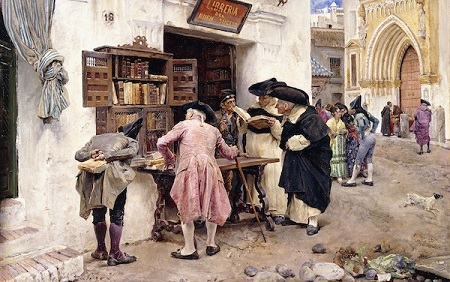
Browse in the SCR E-book Library
You can find us under the Southern Cross in the Traslasierra Valley, Province of Córdoba, Argentina. Visitors always welcome. Just follow the sign that reads: La Cruz del Sur.
sso we can advise you when the next issue is ready. |
